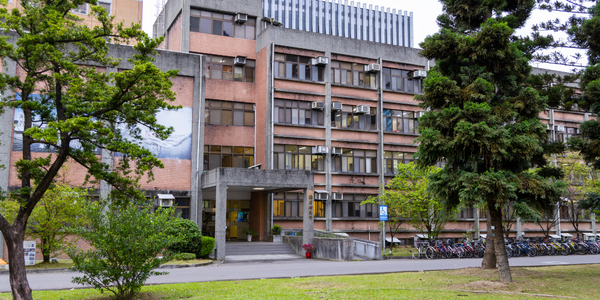Brookdale’s Senior Living facilities reduce energy cost and improve resident comfort
公司规模
Large Corporate
地区
- America
国家
- United States
产品
- Nexant's Retro Commissioning Services
技术栈
- Building Automation Systems
实施规模
- Enterprise-wide Deployment
影响指标
- Cost Savings
- Customer Satisfaction
- Employee Satisfaction
- Productivity Improvements
技术
- 功能应用 - 远程监控系统
- 功能应用 - 企业资产管理系统 (EAM)
适用行业
- 医疗保健和医院
- 建筑物
适用功能
- 设施管理
- 维护
用例
- 建筑能源管理
- 预测性维护
服务
- 系统集成
- 培训
关于客户
Brookdale Senior Living is the largest owner and operator of senior living communities throughout the U.S., operating over 1,100 senior living communities and retirement communities in the US. Brookdale provides a range of services including independent living, assisted living, Alzheimer's and dementia care, rehabilitation, and skilled nursing. Their mission is to enrich the lives of those they serve with compassion, respect, excellence, and integrity. Brookdale's commitment to quality care and resident satisfaction has made them a leader in the senior living industry.
挑战
Brookdale Senior Living, the largest senior housing provider in the country, made a major commitment to reduce energy use and enhance occupant comfort at many of their communities throughout the US. Nexant worked collaboratively with Brookdale to retro commission more than 82 communities within an aggressive 5-month schedule. To reduce the portfolio energy usage of the major HVAC systems, Nexant identified and implemented cost effective ways to save energy and maintain or improve occupant comfort at all 82 senior living/skilled nursing facilities within 5 months. Due to the diverse nature of the building portfolio (size, location, and system types), Brookdale requested a summary of existing building systems, an energy use analysis, facility benchmarks, and recommendations for corrective actions at each facility.
解决方案
To meet the aggressive schedule, Nexant took a streamlined approach to achieve the maximum benefit in minimal time. They utilized their national team, located across 7 different offices, to minimize travel time and associated costs. Nexant corrected on-site deficiencies immediately with their 'find and fix' approach where possible. For smaller facilities without sophisticated control systems, they completed the work within a single site visit. For larger facilities with building automation systems, they took a more traditional, multi-step approach. Nexant focused on low-cost measures but also identified capital investment opportunities. Seamless project coordination and communication were key to completing all projects within the requested time frame.
运营影响
数量效益

Case Study missing?
Start adding your own!
Register with your work email and create a new case study profile for your business.
相关案例.

Case Study
Energy Saving & Power Monitoring System
Recently a university in Taiwan was experiencing dramatic power usage increases due to its growing number of campus buildings and students. Aiming to analyze their power consumption and increase their power efficiency across 52 buildings, the university wanted to build a power management system utilizing web-based hardware and software. With these goals in mind, they contacted Advantech to help them develop their system and provide them with the means to save energy in the years to come.

Case Study
Hospital Inventory Management
The hospital supply chain team is responsible for ensuring that the right medical supplies are readily available to clinicians when and where needed, and to do so in the most efficient manner possible. However, many of the systems and processes in use at the cancer center for supply chain management were not best suited to support these goals. Barcoding technology, a commonly used method for inventory management of medical supplies, is labor intensive, time consuming, does not provide real-time visibility into inventory levels and can be prone to error. Consequently, the lack of accurate and real-time visibility into inventory levels across multiple supply rooms in multiple hospital facilities creates additional inefficiency in the system causing over-ordering, hoarding, and wasted supplies. Other sources of waste and cost were also identified as candidates for improvement. Existing systems and processes did not provide adequate security for high-cost inventory within the hospital, which was another driver of cost. A lack of visibility into expiration dates for supplies resulted in supplies being wasted due to past expiry dates. Storage of supplies was also a key consideration given the location of the cancer center’s facilities in a dense urban setting, where space is always at a premium. In order to address the challenges outlined above, the hospital sought a solution that would provide real-time inventory information with high levels of accuracy, reduce the level of manual effort required and enable data driven decision making to ensure that the right supplies were readily available to clinicians in the right location at the right time.

Case Study
Intelligent Building Automation System and Energy Saving Solution
One of the most difficult problems facing the world is conserving energy in buildings. However, it is not easy to have a cost-effective solution to reduce energy usage in a building. One solution for saving energy is to implement an intelligent building automation system (BAS) which can be controlled according to its schedule. In Indonesia a large university with a five floor building and 22 classrooms wanted to save the amount of energy being used.

Case Study
Powering Smart Home Automation solutions with IoT for Energy conservation
Many industry leaders that offer Smart Energy Management products & solutions face challenges including:How to build a scalable platform that can automatically scale-up to on-board ‘n’ number of Smart home devicesData security, solution availability, and reliability are the other critical factors to deal withHow to create a robust common IoT platform that handles any kind of smart devicesHow to enable data management capabilities that would help in intelligent decision-making

Case Study
Gas Pipeline Monitoring System for Hospitals
This system integrator focuses on providing centralized gas pipeline monitoring systems for hospitals. The service they provide makes it possible for hospitals to reduce both maintenance and labor costs. Since hospitals may not have an existing network suitable for this type of system, GPRS communication provides an easy and ready-to-use solution for remote, distributed monitoring systems System Requirements - GPRS communication - Seamless connection with SCADA software - Simple, front-end control capability - Expandable I/O channels - Combine AI, DI, and DO channels







